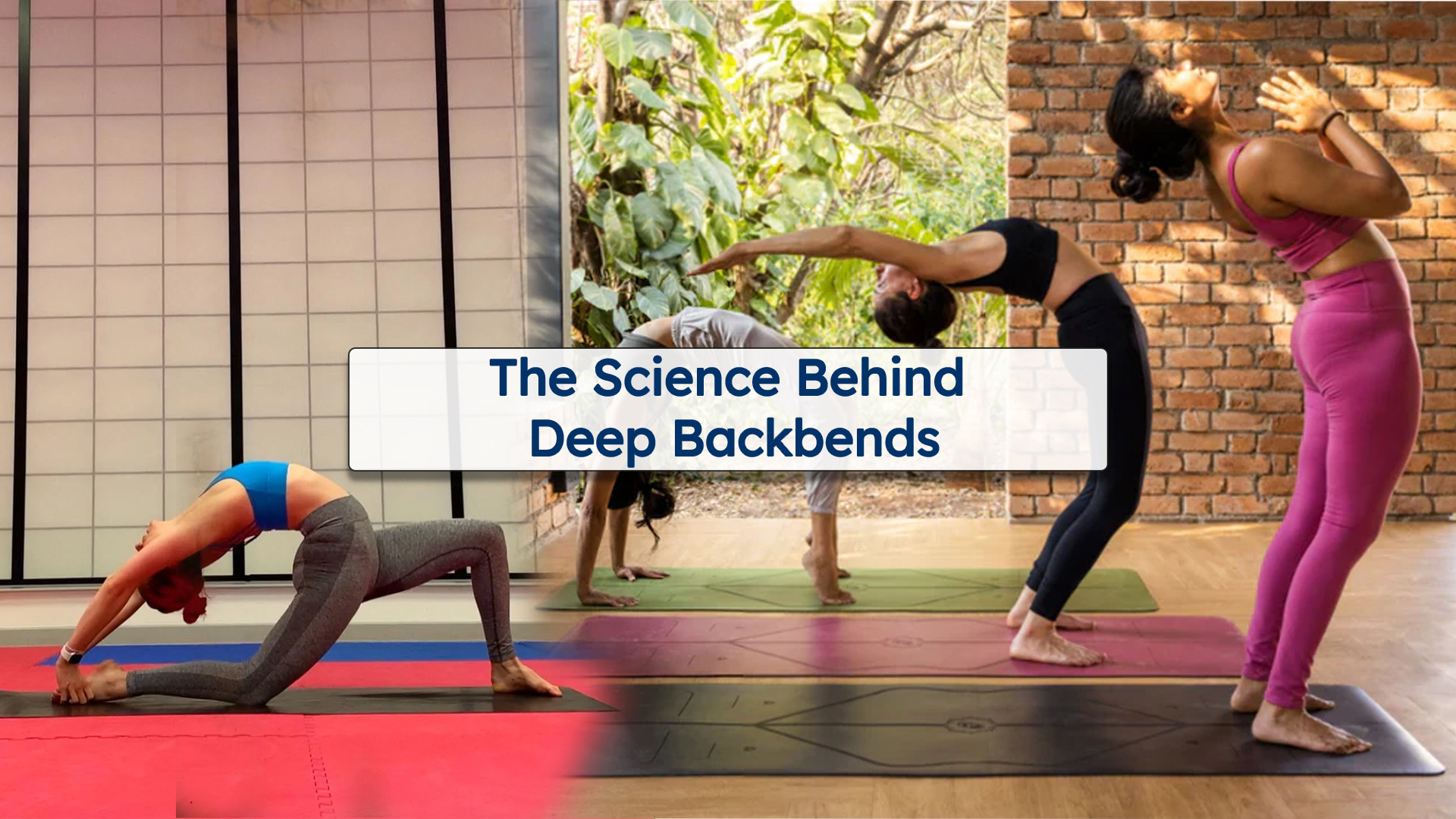Deep backbends are among the most visually striking and physically demanding yoga poses. While they require flexibility, strength, and patience, understanding the science behind these movements can help practitioners prepare their spines safely and effectively. In this blog, we’ll explore the biomechanics of deep backbends and share key techniques to support a healthy and sustainable practice.
Understanding Spinal Extension
The human spine consists of 24 vertebrae divided into cervical, thoracic, lumbar, sacral, and coccygeal regions. When performing deep backbends, the spine undergoes extension, a movement that increases the angle between the vertebrae. The thoracic spine, which naturally has a kyphotic (slightly rounded) shape, plays a crucial role in distributing the curve of a backbend, while the lumbar spine, already lordotic (curved inward), must be stabilized to prevent excessive compression.
Key Muscles Involved in Backbends
Effective backbending requires coordination between several muscle groups:
- Erector Spinae: These muscles run along the spine and help with spinal extension.
- Iliopsoas: The hip flexors play a role in preventing excessive lumbar compression by promoting even spinal extension.
- Gluteus Maximus: Engaging the glutes correctly helps support the pelvis and prevent lower back strain.
- Core Muscles: A strong core, including the transverse abdominis and obliques, provides essential stability.
- Shoulder and Chest Muscles: The pectoralis and deltoid muscles must be open and flexible to allow for deep shoulder extension in backbends like Wheel Pose.
Preparing the Spine for Advanced Backbends
To safely progress into deep backbends, a systematic approach involving mobility, strength, and breath awareness is essential.
1. Spinal Mobilization
Gentle spinal mobility exercises like Cat-Cow stretches, seated twists, and dynamic Cobra Pose help warm up the spine and improve articulation between vertebrae.
2. Strengthening the Posterior Chain
A strong posterior chain (including the glutes, hamstrings, and back muscles) supports a balanced and stable backbend. Exercises such as Locust Pose (Salabhasana) and Bridge Pose (Setu Bandhasana) build necessary strength.
3. Opening the Front Body
Tight hip flexors and chest muscles can limit backbending ability and contribute to lower back compression. Lunges, Heart Openers, and Shoulder Stretches improve anterior chain flexibility.
4. Breath Awareness and Nervous System Regulation
Deep, diaphragmatic breathing helps relax the nervous system, making it easier to ease into intense backbends. Practicing Ujjayi breath during asana practice enhances endurance and control.
Common Mistakes and How to Avoid Them
- Over-reliance on the Lumbar Spine: Ensure even distribution of extension throughout the spine by focusing on thoracic mobility.
- Neglecting Core Engagement: Always activate the deep core muscles to prevent lower back strain.
- Rushing the Process: Progress gradually to avoid injury and allow time for tissues to adapt.
Conclusion
Deep backbends are a combination of strength, flexibility, and mindful preparation. By understanding the biomechanics and applying proper conditioning techniques, practitioners can build a sustainable and pain-free backbending practice. Always listen to your body, prioritize alignment, and enjoy the journey into deeper spinal extension!


